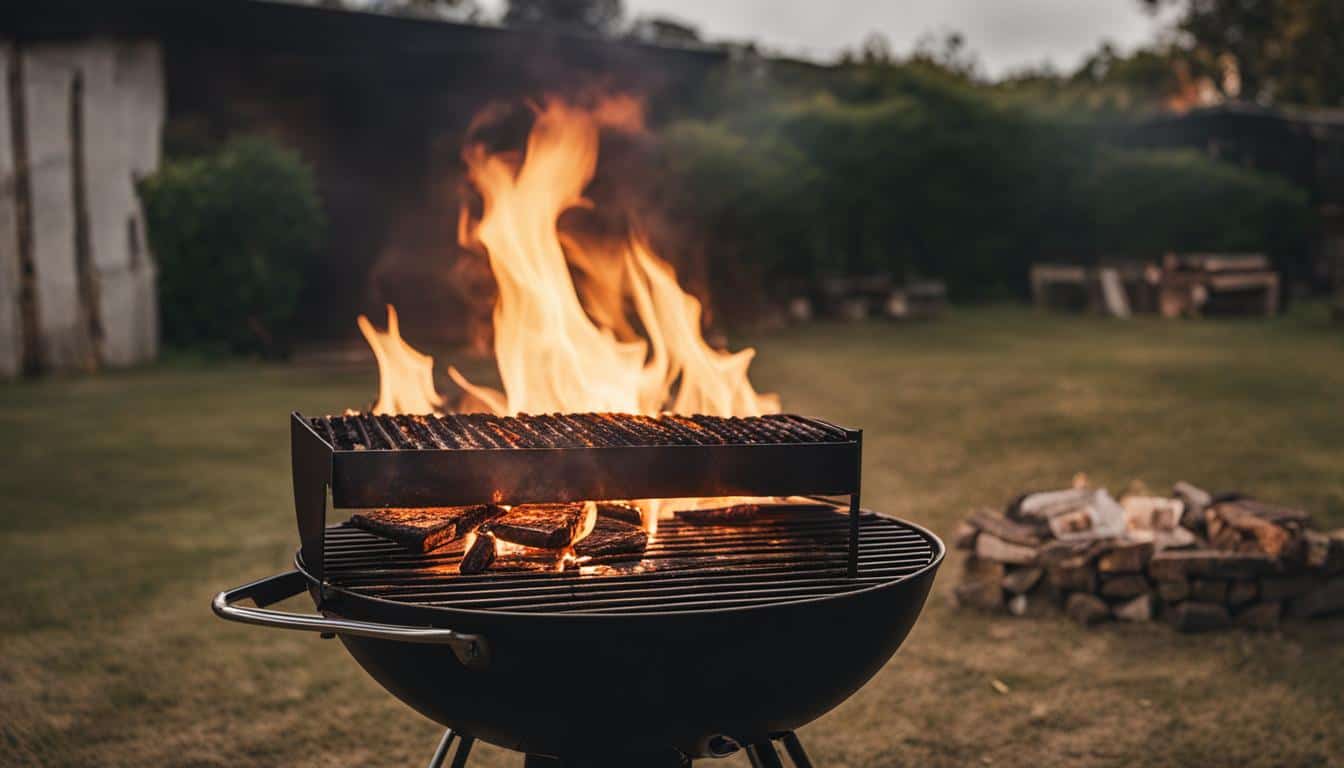If you love outdoor cooking, you’ve probably considered using a charcoal grill. While charcoal grills are popular for their smoky flavor and traditional appeal, they can present some challenges that you should be aware of.
In this article, we will explore the various charcoal grill disadvantages and outdoor cooking challenges that you may face. But hey, there are advantages as well.
1. Long Preparation Time
One of the major drawbacks of using a charcoal grill is the long preheating time. Unlike gas grills, which can reach desired cooking temperature within a few minutes, charcoal grills can take up to 30 minutes or more to preheat properly.
The reason for this is that charcoal grills rely on burning charcoal to generate heat. This process takes longer as you need to wait for the charcoal briquettes or lump charcoal to catch fire and burn down to the right temperature.
| Grill Type | Preheating Time |
|---|---|
| Charcoal | 20-30 minutes |
| Gas | 5-10 minutes |
As you can see in the table above, charcoal grills take almost t ee times longer to preheat compared to gas grills. This can be a big disadvantage if you’re short on time and want to start grilling quickly.
However, some people argue that the longer preheating time is worth it as charcoal grills can produce a more intense and smoky flavor that is unique to charcoal-grilled food.
Tip: To speed up the preheating process, you can use a chimney starter to light the charcoal. This will help the charcoal burn more evenly and quickly.
2. Inconsistent Cooking Temperature
One of the biggest challenges of using a charcoal grill is the inconsistent cooking temperature it can create. Charcoal burns unevenly, resulting in hot spots and cooler areas on the grill.
This can lead to unevenly cooked food and burnt patches, ruining your perfectly marinated meats or veggies. It can be frustrating to have to constantly move food around the grates to avoid overcooking or undercooking.
Furthermore, maintaining a consistent temperature on a charcoal grill is often challenging. Unlike gas grills that come with precision temperature control, charcoal grills require constant monitoring and adjustment to maintain the desired heat.
The lack of precise heat control makes it difficult to cook delicate foods that require specific temperatures for optimal results.
| Charcoal Grills: Consistent Temperature | Gas Grills: Consistent Temperature |
|---|---|
| Charcoal burns unevenly, creating hot spots and cooler areas on the grill, leading to unevenly cooked food and burnt patches. | Gas grills come with precision temperature control, ensuring a consistent temperature t oughout the cooking process. |
| It can be challenging to maintain a consistent temperature on a charcoal grill, requiring constant monitoring and adjustments. | Gas grills come with precise controls that allow you to maintain a consistent temperature, making it easier to cook delicate foods that require specific temperatures. |
Overall, if you’re looking for a grill that offers consistent temperature control and evenly cooked food, a gas grill may be a better option for you.

3. Difficult Temperature Control on Charcoal Grills for Delicate Foods
When it comes to cooking delicate foods on a charcoal grill, maintaining a consistent temperature can be challenging. Unlike gas grills that offer precise heat control, charcoal grills require more attention and patience.
It can be especially difficult to cook food that requires specific temperatures for optimal results, such as fish or vegetables. Without the ability to adjust the heat precisely, these foods can easily become overcooked or burnt.
To overcome this challenge, you can try arranging the charcoal in a way that allows for more control over the temperature. For example, by using the two-zone method of placing coals on only one half of the grill, you can create a hotter and cooler zone. This allows you to move the food between the two zones for better temperature control.
How to set up a two-zone fire:
| Step | Instructions |
|---|---|
| 1 | Arrange the charcoal on only one half of the grill |
| 2 | Leave the other half of the grill empty |
| 3 | Light the charcoal and let it heat up |
| 4 | Cook the food over the hotter coals, then move it to the cooler zone to finish cooking |
Another option is to use a charcoal chimney starter to light the coals separately from the grill and add them when they’re hot. This gives you more control over the temperature and reduces the risk of burning your food.
Overall, while charcoal grills can present challenges when it comes to temperature control, there are ways to overcome them. With a little patience and practice, you can still enjoy cooking delicate foods on a traditional charcoal grill.
4. Messy and Time-Consuming Clean-up
One of the biggest drawbacks of charcoal grills is the amount of clean-up required after grilling. Unlike gas grills, charcoal grills produce ash that needs to be removed manually. Cleaning the grates can also be time-consuming, especially if there are stubborn food stains.
To properly clean a charcoal grill, you’ll need to remove the ash from the bottom of the grill bowl using a brush or ash tool. You’ll also need to clean the grates thoroughly to remove any leftover food particles.
This can be a messy process, so be sure to wear gloves and use a trash bag or container to dispose of the ash and charcoal.
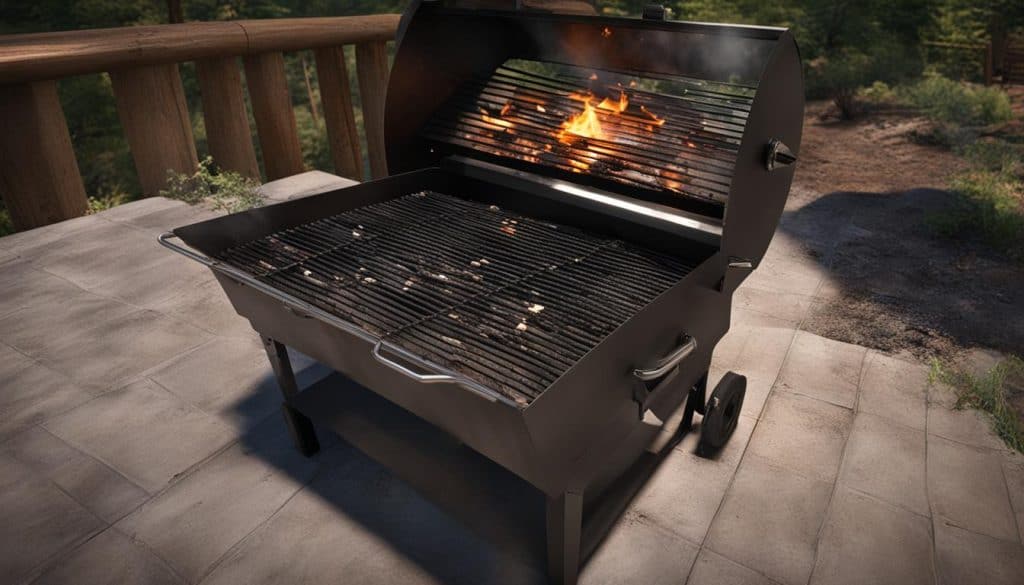
It’s important to note that proper ash removal and disposal of charcoal is essential for fire safety. Make sure the grill has completely cooled down before disposing of the ash and charcoal.
5. Potential for Flare-ups: How to Avoid Safety Hazards and Burnt Food
When cooking on a charcoal grill, grease drippings can ignite and cause flare-ups. These flare-ups can be a safety hazard and result in burnt food.
To prevent excessive flare-ups, make sure to keep an eye on your grill while cooking. Use a grill brush to remove excess grease from the grates before cooking and try to avoid placing fatty meats directly over the heat source.
If a flare-up does occur, use a pair of long-handled tongs to move the food away from the flames until they die down. You can also spray the flames with water, but be sure to do so carefully to avoid steam burns.
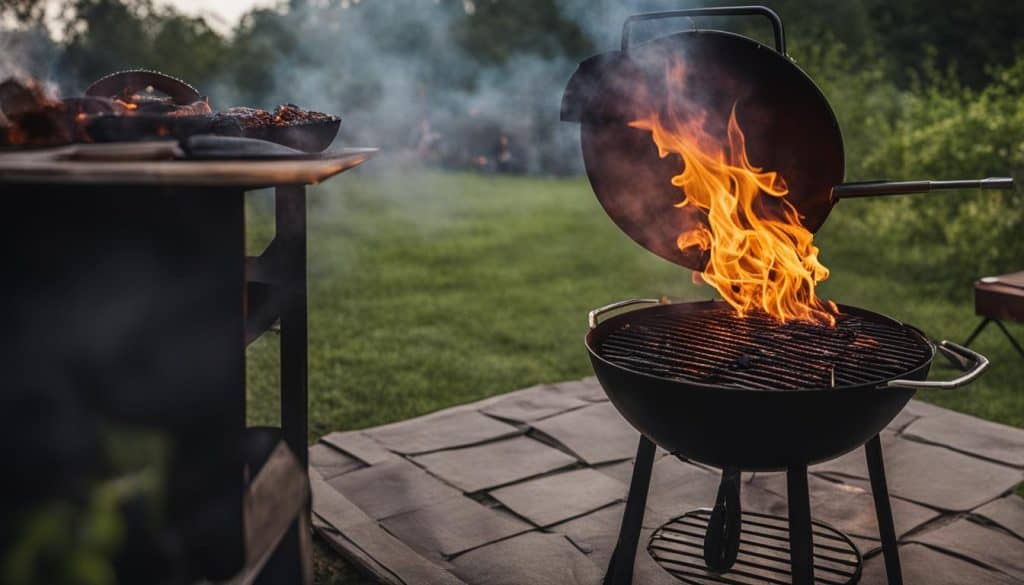
In addition, it’s important to have a fire extinguisher nearby and know how to use it in case of an emergency.
By taking these precautions, you can enjoy the delicious flavor of charcoal-grilled food without risking safety hazards or burnt meals.
6. Environmental Impact
While charcoal grills are a popular choice for outdoor cooking, it’s important to consider their impact on the environment. Burning charcoal releases carbon dioxide and other pollutants into the air, contributing to air pollution and climate change.
In fact, a study found that a typical four-hour charcoal grilling session can produce as much carbon monoxide as driving a car for over 24 hours!
According to the Environmental Protection Agency (EPA), burning charcoal also emits particulate matter, which can cause respiratory problems as well as contribute to haze and smog. This pollution not only affects our health but also harms the environment.
The production and transportation of charcoal also have negative environmental impacts. It requires cutting down trees and burning them in kilns, leading to deforestation and habitat destruction. Transporting charcoal also requires fossil fuels, contributing to greenhouse gas emissions.
To reduce the environmental impact of charcoal grilling, consider using an electric or gas grill instead. You can also reduce emissions by using natural lump charcoal made from sustainably sourced wood or using a chimney starter instead of lighter fluid.
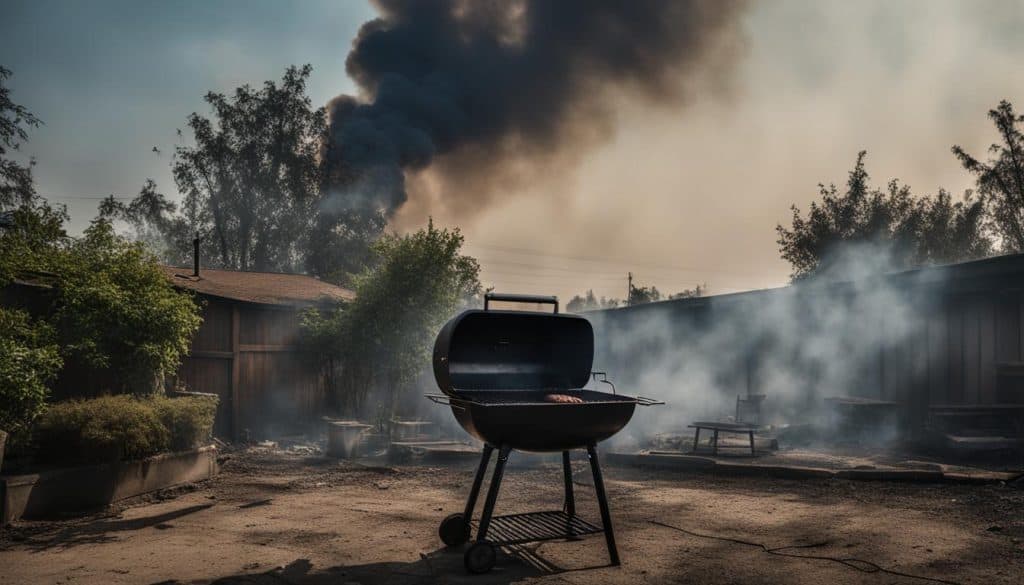
7. Health Concerns of Charcoal Grilling
While charcoal grilling is a popular outdoor cooking method, it also poses health concerns that should not be ignored. When meat is grilled at high temperatures, it can release carcinogenic polycyclic aromatic hydrocarbons (PAHs) into the food.
These chemicals have been linked to an increased risk of cancer, particularly for those who consume grilled meat frequently.
To reduce your exposure to PAHs, it is recommended to avoid charring or burning meat while grilling, as this can increase PAH levels in the food.
Furthermore, it’s important to ensure proper food safety when grilling with charcoal. Always cook meats to their recommended internal temperatures, and avoid cross-contamination with raw meats or their juices.
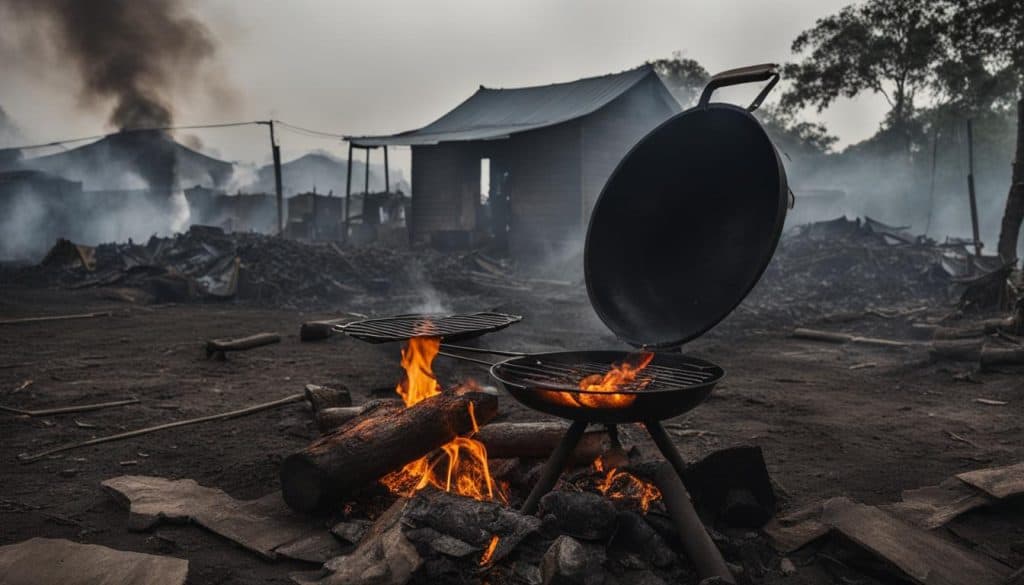
8. Storage and Transportation Challenges
Charcoal grills require bulky charcoal bags, which can be inconvenient to store and transport. If you have limited space, storing a large bag of charcoal can be challenging. Additionally, if you’re planning to take your grill on the go, the extra weight and size of the charcoal bags can make transportation difficult.
When storing charcoal, it’s important to keep it in a dry and cool place to prevent moisture from affecting its quality. You may need to consider purchasing a specialized storage container or find a suitable location in your garage or shed.
If you’re transporting your charcoal grill, it’s important to secure the charcoal bags properly to prevent them from spilling or shifting during transit. This can be done by using bungee cords or investing in a storage container that’s specifically designed for charcoal transport.
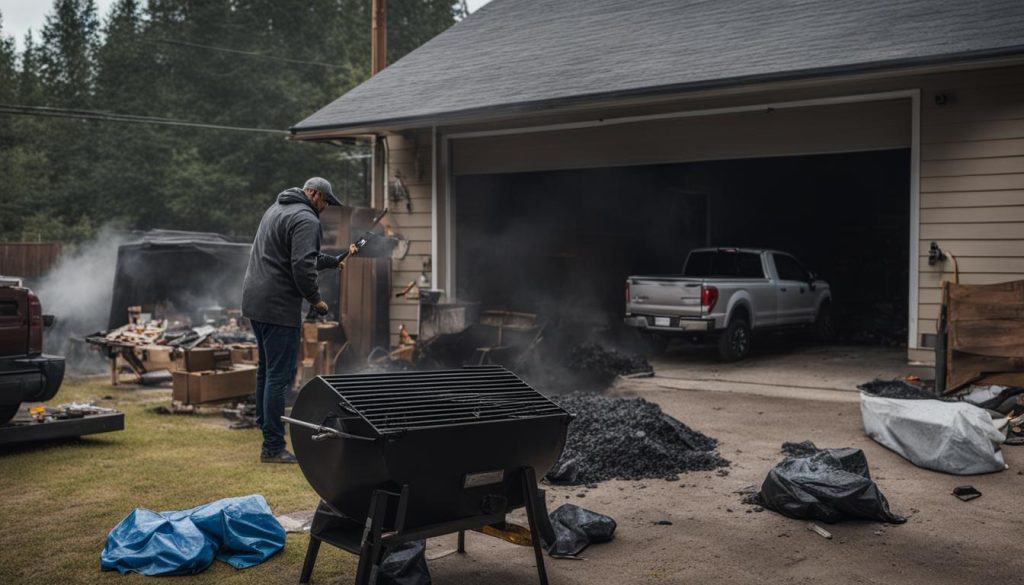
Overall, the storage and transportation challenges associated with charcoal grills should be taken into consideration before making your purchase. If you have limited space or need to transport your grill frequently, a gas grill may be a more convenient option for your outdoor cooking needs.
9. Weather Dependency
Charcoal grills are a great way to cook outdoors and enjoy the smoky flavor of grilled food. However, they are not ideal for use in windy weather conditions.
When it’s windy, the flames on a charcoal grill can easily be extinguished, making it difficult to cook your food properly. The wind can also cause the temperature to fluctuate, making it even harder to maintain a consistent temperature.
If you do need to use your charcoal grill on a windy day, try to find a sheltered area where the wind won’t be as strong. You may also need to use a wind guard to protect the flames from the wind.
Always be sure to keep an eye on your grill when cooking in windy weather conditions to prevent any accidents from happening.
10. Cost Considerations
When deciding on a grill, cost is an important factor to consider. Charcoal grills can be more expensive than their gas counterparts, and the ongoing cost of charcoal can add up over time. Additionally, you may need to purchase additional accessories such as a chimney starter and lighter fluid to get your grill going.
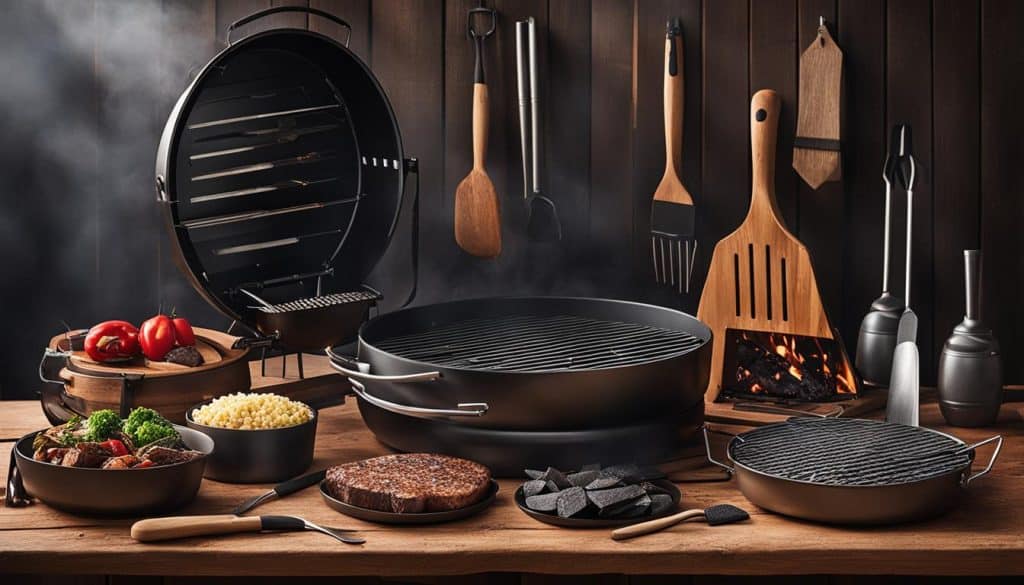
| Charcoal Grill | Gas Grill | |
|---|---|---|
| Upfront Cost | Can be more expensive | Generally less expensive |
| Ongoing Cost | Charcoal can add up over time | Propane tanks are easily refillable |
| Additional Accessories | May need to purchase chimney starter and lighter fluid | May need to purchase propane tank and regulator |
As you can see, there are cost considerations to keep in mind when deciding between a charcoal and gas grill. It’s important to weigh the initial and ongoing costs, as well as any additional accessories you may need to purchase, before making your decision.
Conclusion: Consider These Charcoal Grill Disadvantages for Your Outdoor Cooking Challenges
While charcoal grills have been a popular choice for outdoor cooking enthusiasts for many years, it’s important to consider the various disadvantages they present.
From the longer preheating time to the inconsistency in cooking temperature, messy clean-up, potential health concerns, and environmental impact, it’s essential to weigh the pros and cons before choosing a charcoal grill for your outdoor cooking needs.
Although charcoal grills offer a traditional grilling experience and smoky flavor, they can be challenging to control the temperature and are not ideal for windy conditions. Storage and transportation can also present challenges.
Furthermore, you need to consider the additional costs of purchasing a chimney starter and lighter fluid. Charcoal can be more expensive than propane, the fuel used for gas grills.
Overall, the disadvantages of charcoal grills are worth considering carefully before making a choice. However, if you enjoy the traditional flavor and can manage the challenges, charcoal grilling can be a rewarding experience.
But remember, safety should always come first, no matter what type of grill you choose to use. And keep in mind the importance of proper food safety, whether you use a charcoal or gas grill.
Thanks for learning about the various charcoal grill disadvantages and outdoor cooking challenges that come with using charcoal grills. Happy grilling, and be sure to choose the right grill that suits your needs!
